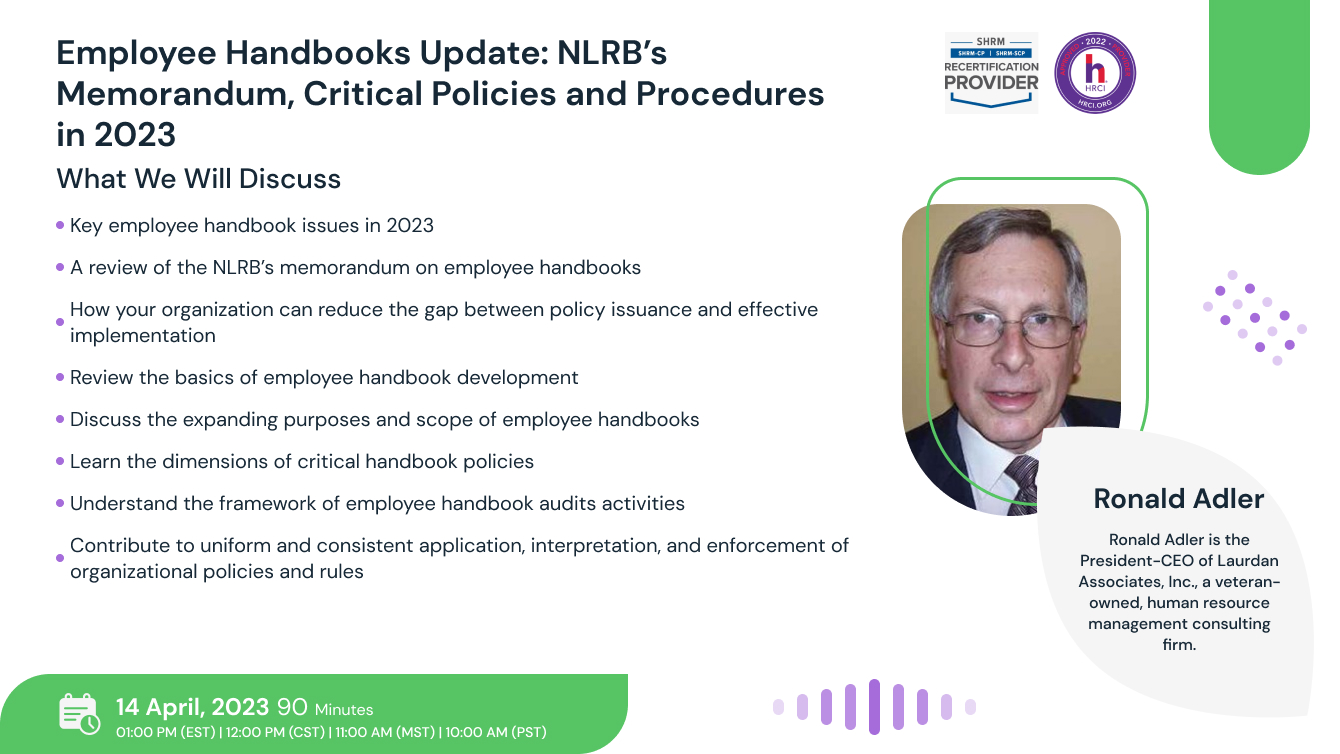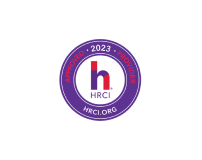Employee Handbooks in 2023
A nationwide survey of organizations revealed that while they use employee handbooks to
address key business, legal, and talent management issues, they often limit the effectiveness of
their handbook policies by using ineffective employee handbook practices. As the survey report
noted, in many organizations there is a disconnect between the drafting and issuing of
handbook policies and the practices that ensure those policies address critical issues and are
effectively implemented. This disconnect can lead to missed business goals, increased legal
action, and the loss of critical talent.
Employee handbooks are a critical tool in providing important information about your
organization to employees. Employee handbooks typically describe what you expect of your
employees and what your employees can (should) expect from you. Employee handbooks also
provide critical information about your organization and your workplace, and how your
employees are expected to fit in.
Employee handbooks further formalize mutual expectations. In delineating these expectations,
employee handbooks create opportunities and risks. Handbooks provide your organization with
the opportunity to enhance the value of its human capital, make your organization more
competitive, and improve individual and organizational performance. Conversely, handbooks
can impede the achievement of business objectives, increase employment related liabilities, and
reduce managerial prerogatives by making promises or commitments to certain procedural
safeguards that your organization did not intend to make.
As noted in a memorandum from a former General Counsel of the NLRB: “…incorrectly
designed employee handbooks can violate the law and have a ‘chilling effect’ on employees’
activities.”
Thus, while your employee handbook provides you with the opportunity to make your workforce
more committed and supportive of organizational goals, it can also unfortunately serve as the
basis for employees’ legal action and can significantly reduce employees’ commitment to your
organization’s success.
Join us this April to learn about the policies and procedures you need to comply with in 2023
when it comes to designing your Employee Handbook from scratch or redesigning the current
one, so it may protect your organization against potential lawsuits.
What We Will Discuss
-Key employee handbook issues in 2023
-A review of the NLRB’s memorandum on employee handbooks
-How your organization can reduce the gap between policy issuance and effective
implementation
-Review the basics of employee handbook development
-Discuss the expanding purposes and scope of employee handbooks
-Learn the dimensions of critical handbook policies
-Understand the framework of employee handbook audits activities
What You Will Learn
Your employee handbook plays an important role in communicating with and providing
information to your employees. Increasingly, your employee handbook has to ensure that it is
aligned with strategic and business objectives, is properly drafted, and is effectively
implemented. Thus, we will discuss how your handbook can:
-Enhance your employment brand
-Play a key role in recruitment and retention
-Enhance employee relations, employee morale, and productivity
-Contribute to uniform and consistent application, interpretation, and enforcement of
organizational policies and rules
-Protect your organization against claims of improper employee/supervisor conduct
-Reduce your organization’s exposure to employment related liabilities
Who Will Benefit
-HR Professionals
-Internal Auditors and External Auditors
-Business Owners
-CFOs
-Managers and Supervisors
-Compliance Officers
-Risk Managers
-Human Resources Associations
-CFO Organization
-Risk Management Organizations
-Management Associations

Ronald Adler, M.B.A.
Ronald Adler is the president-CEO of Laurdan Associates, Inc. He collaborates with Clatid Compliance to educate the Human Resources professionals and help them stay updated with the recent developments in the industry. He has more than 45 years of HR consulting experience working with U.S. and international firms, small businesses and non-profits, insurance companies and brokers, and employer organizations.
Mr. Adler is the developer of the Employment-Labor Law Audit™ (ELLA®), the nation’s leading HR auditing and employment practices liability risk assessment tool — now in the tenth edition. He is a member of the Society for Human Resource Management (SHRM) and has served as a subject matter expert (SME) to SHRM on HR metrics and workplace issues. He is also a former member of the Institute of Internal Auditors.
Mr. Adler has a B.S. degree in Finance from the University of Maryland and an M.B.A. from the University of Southern Illinois.
Standeagle Webinar Certification - Standeagle rewards you with Standeagle Achievement Certification for unlocking and attending this webinar. It is to acknowledge your participation in this training session and to add more to your professional score.
Standeagle Courses and Webinars or any Education published "Articles & Materials" strictly follows the standards and guidelines of the Professional Credit / CEU Providers and Well Researched before publishment.
Standeagle doesn't support any Fake - News, Articles, or Compliance updates; Our Industry Experts are highly verified and recognized, and their Pre-publishment is verified via our experts and fact-checkers.

ACCREDITATIONS


